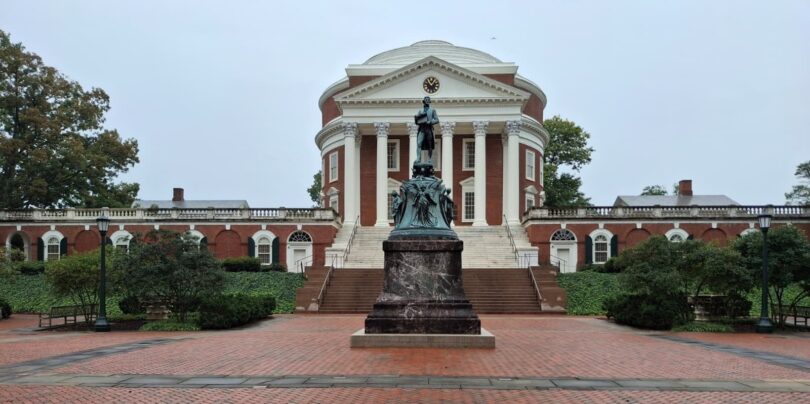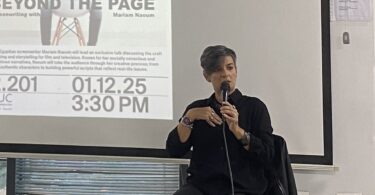Upper Marlboro, Maryland, U.S.A. – Last year, Kerrington Brown, a junior at Luella High School and the Academy for Advanced Studies, never thought she’d attend the University of Georgia, a majority white school.
Now Brown, who wants to feel at home and welcomed as a prospective student, is reconsidering.
Listen to the author read this story:
“If you asked me if I was going to UGA, I’d laugh and say no,” Brown said. But after talking to Black alumni and current students of color about their experiences at the university, she feels “[UGA] still protects marginalized communities even though it is a predominately white institution.”

Predominately white institutions are U.S. institutions with 50% or more white students. These universities have historically barred non-white students from attending and often struggle to facilitate belonging for students of color, according to the research organization EdTrust.
Brown, 16, of Henry County, Georgia, is prioritizing schools like UGA with strong Black student communities, which could be low cost under merit-based scholarships like the Zell Miller Scholarship that grant high-achieving students from Georgia full tuition at participating Georgia institutions.
Along with Brown, Favour Falaye, a 17-year-old senior at The Early College at Guilford in North Carolina is among 11 students across the U.S. and its territories who spoke to Youth Journalism International about their concerns surrounding college choice.
Most said they were re-evaluating their choices due to financial uncertainty, political tension and lack of belonging.

Falaye said she decided against applying to Amherst College in Massachusetts because of its location and yearly tuition hike. Instead, Falaye has begun searching for universities closer to home in Greensboro, NC because they are “more affordable.”
Amherst College increased its cost of attendance for the 2025-2026 academic year by 4.75%, The Amherst Student calculated. That makes the sticker price of Amherst College $93,090 and the sixth most expensive U.S. institution, according to Business Insider.
While private U.S. institutions like Amherst College are known for their generous aid, Falaye and Brown have reservations on even submitting the FAFSA, the federal financial form used to determine the amount of aid a student would receive.
Falaye said the Trump administration’s educational budget cuts, including Pell Grant reductions, makes her “anxious,” as she believes she won’t qualify for much aid.

Brown said she’s not sure how to complete the FAFSA — a feeling shared by other students YJI interviewed. But Brown said organizations like Ron Brown Scholars Guided Pathway Support have been helpful in getting her prepared for the application process.
She is also concerned about universities’ responses to political pressure.
“I don’t want to go to a college that is currently facing political strife which could affect me in a certain situation,” Brown said, citing Columbia University’s cancellation of its schoolwide graduation in 2024 following pro-Palestinian protests and Harvard University’s legal battles with the Trump administration as examples.
Brown also said she wants to feel represented.
“If I don’t see a high Black American population that is not the football team, and they have a red-leaning state, I will not apply there because at this current point in America, I don’t want to deal with that while getting my education,” Brown said.
Falaye is also worried about not feeling welcomed on campus next fall, especially with the elimination of many diversity, equity and inclusion policies and programs based on pressure from the federal government.
“What will the students be like? The removal of DEI policies … that kinda is a negative for me because I am a Black woman,” Falaye said. “I don’t know if there’ll be more hostility on campus.”
To ensure the university she chooses aligns with her values, Falaye said she’s tightening her criteria, starting with reframing her ideas on college.
“I went from thinking of college as just the next step to more of a ‘I need to use this to the maximum potential possible.’ So, seeing which colleges have proper resources available [and] career programs and centers will be very important to me if I do get in,” Falaye said.

Brown said she has increased her news consumption this year and stays updated on higher education issues.
Falaye has also been directly impacted by the administration’s attacks on DEI. Last summer, she participated in a summer program at North Carolina State University, which was discontinued in the university’s effort to comply with the Trump administration’s threats of defunding the school if it continued its institutional support.
“That was extremely upsetting to me because the opportunities that helped me so much wouldn’t be there for my friends in the future,” Falaye said.
Mikayla Solomon, a graduate of Walter L. Sickels High School in Tampa, Florida, had a similar experience.
While attending a pre-college summer session at Carnegie Mellon University in Pittsburgh, Solomon saw students protesting President Trump’s attendance at the Pennsylvania Energy and Innovation Summit on campus.
Protesters painted disapproving messages on The Fence, a site that is heralded as a place of free expression.
Days later, the university painted over The Fence. Solomon, 17, said she found this alarming.
Solomon added that some of the teachers she connected with were laid off following the Trump administration’s national push for the removal of DEI programming at universities.
“It hurt a lot to know that someone who had such a large impact on my summer was gone because of a funding cut,” Solomon said. “I understand that [colleges] are a business first and foremost, but this makes me take a second look.”
For Solomon, feeling protected has become more important in her college search.
“I can reconsider a lot sometimes,” she said. “Are you guys as diverse and accommodating as you say you are? While student expression isn’t one of my top factors to help me decide a college, it definitely is a factor. That’s been directly influenced by the recent political decisions in higher ed.”
Dorothy Quanteh is a Reporter with Youth Journalism International from Maryland, U.S.A. She reported and wrote this story, contributed the illustrations and made the audio recording.
Lina Marie Schulenkorf, a Correspondent with Youth Journalism International. She contributed the photographs.



